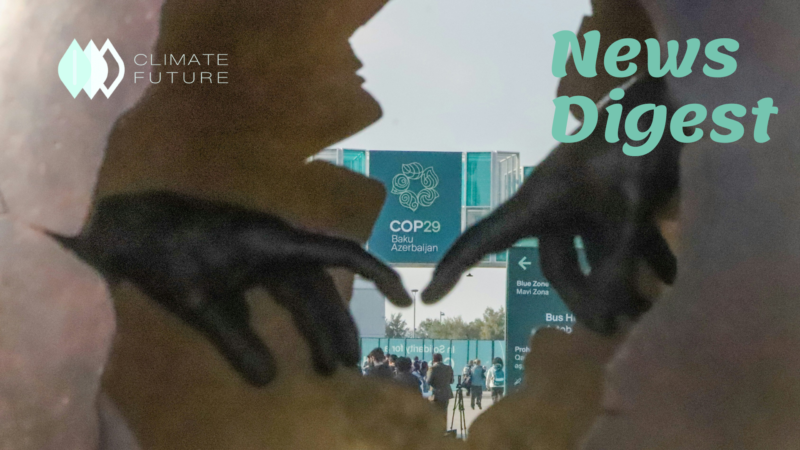Asian wind power development faces growing storm with local communities

Image: Flickr/ Climate Group
In Asia, wind energy is a viable renewable energy source, yet there are challenges due to conflicts with residents. South Korean fishermen are concerned that wind turbines will reduce their fishing grounds and scare off fish. Certain wind projects in the Philippines are charged with invading protected areas. Wind developers must better interact with local communities and consider their concerns if they hope to be accepted by society. This can entail being more selective when selecting project locations, making up for any bad effects on the community, and ensuring the right environmental protections are in place. Project financiers may also have an impact by restricting developers’ ability to comply with social and environmental norms. Future options might be more creative, like combining aquaculture and wind farms. In general, the wind sector must adopt a more comprehensive strategy for sustainability, taking into account not only the clean energy generated but also the effects that wind farms have on society and the environment throughout their lifetimes.
Indonesia and the Philippines contributed a bulk of US$6.3 billion in green

Image: Manila Water
Green investment increased in Southeast Asia in 2023, with Indonesia and the Philippines setting the pace. Nevertheless, the region’s decarbonization objectives remain unfulfilled. Although they have made significant investments in green infrastructure and renewable energy, the Philippines and Indonesia have not yet converted their national goals into practical commercial plans. While Indonesia finds it difficult to acquire funds to phase out coal power, the Philippines has not established a net-zero goal. In terms of new agreements, Singapore and Vietnam are behind, but their policy frameworks are more in line with climate goals. While Singapore gives priority to renewable energy data centers, Vietnam is finalizing its path to achieve net zero by 2050. Southeast Asia will have a $1.49 trillion financial need by 2030, notwithstanding its advances. One of the main causes is the absence of shareholder action compelling businesses to use sustainable business practices. Investor pressure on corporations such as Shell and ExxonMobil is nonexistent in Southeast Asia, in contrast to Europe and the US. Pressure to reach decarbonization targets is lacking, which impedes the flow of green investments. In order to attain sustainability, the area must discover strategies to promote shareholder engagement and close the investment gap.
Renewable energy transforming the landscape

UN News/Jing Zhang
The head of IRENA, Francesco La Camera, talks about the difficulties and ways to convince stakeholders and governments to support renewable energy. Although there are commitments, it is still difficult to put them into practice. International collaboration is essential to helping nations implement renewable energy goals, as demonstrated by programs such as the Accelerated Partnership for Renewables in Africa. Developing nations don’t need assistance with infrastructure, technology, or financing to make the switch to a new energy system. Africa has the capacity to produce green hydrogen and renewable energy, but it lacks the infrastructure needed to realize this potential. La Camera uses Mauritius as an example of a country where the installation of solar panels has greatly aided in the achievement of Sustainable Development Goal 7. But structural obstacles like infrastructure, regulatory frameworks, market design, and a trained labor force must be addressed if similar results are to be repeated throughout the world. The acceleration of the shift from fossil fuels to renewable energy is contingent upon the removal of these obstacles, as stressed at COP28.
First Covid, now heat: Online schooling returns to the Philippines

Image: ILO Asia-Pacific, CC BY-SA 3.0, via Flickr
This month, the Philippines is experiencing extremely high temperatures, which has forced schools to close and move to online learning. This is creating issues similar to those encountered during COVID-19 lockdowns and prompting worries regarding disparities in educational opportunities. A large number of students are unable to engage in online classes because they do not live in houses with internet access. In comparison to students from affluent backgrounds, this puts them at a disadvantage. In addition, schools lack adequate cooling systems. Classrooms frequently have insufficient ventilation and are packed with people. According to a recent poll, 87% of pupils had heat-related illnesses at school. Climate change is predicted to make this heat more frequent throughout the upcoming months, longer and harsher heatwaves are expected to affect 243 million children throughout Asia, according to UNICEF’s predictions. Teachers are demanding that the government build more classrooms, install enough ventilation, and give out free water to drink. Additionally, they want the school schedule to be adjusted such that breaks take place in the hottest months of the year. Educators are considering resigning from their positions due to the extreme heat. They think that schools should be teaching students more about climate change.
References
https://news.un.org/en/story/2024/04/1148721
https://www.eco-business.com/news/first-covid-now-heat-online-schooling-returns-to-the-philippines



